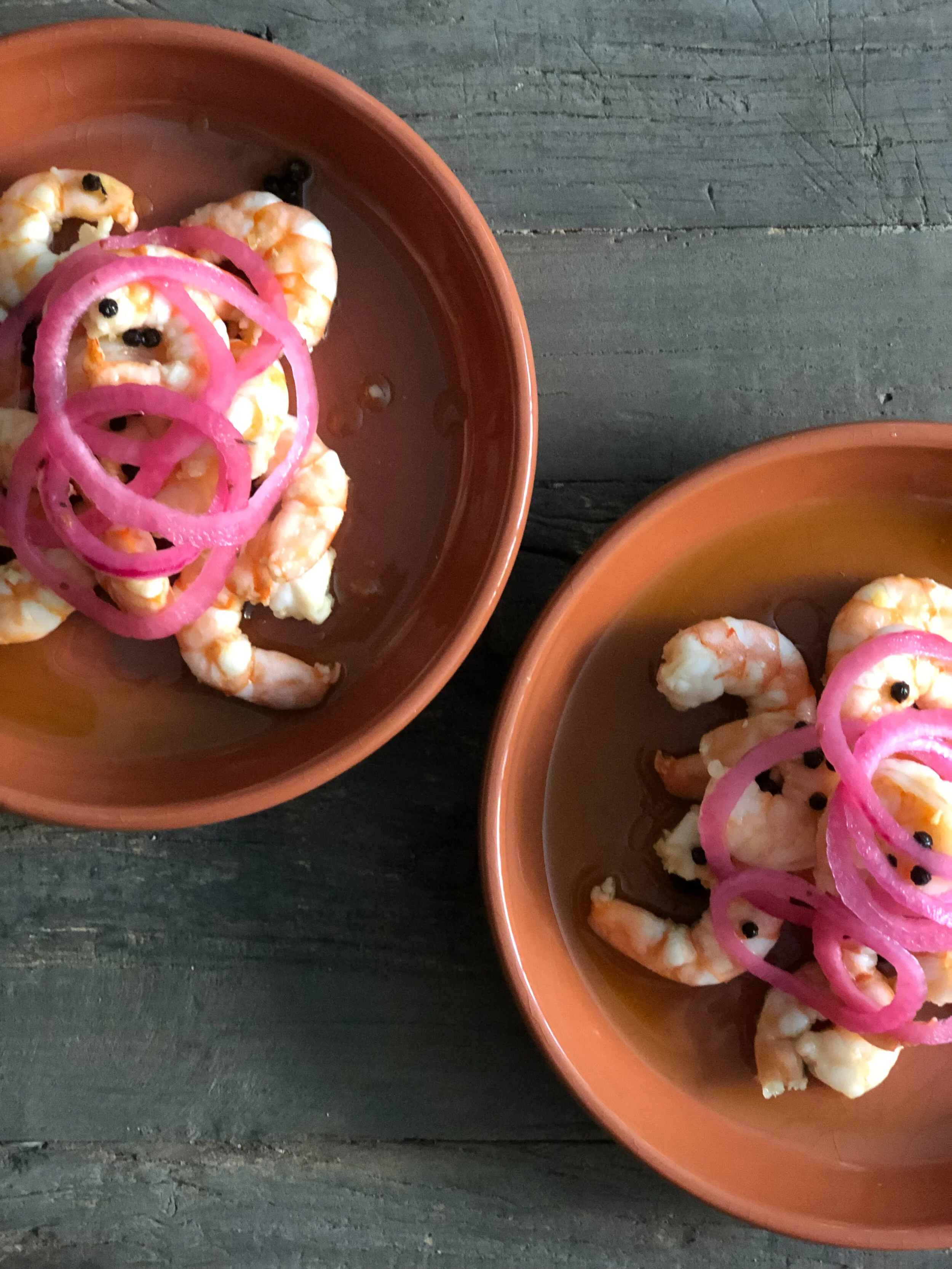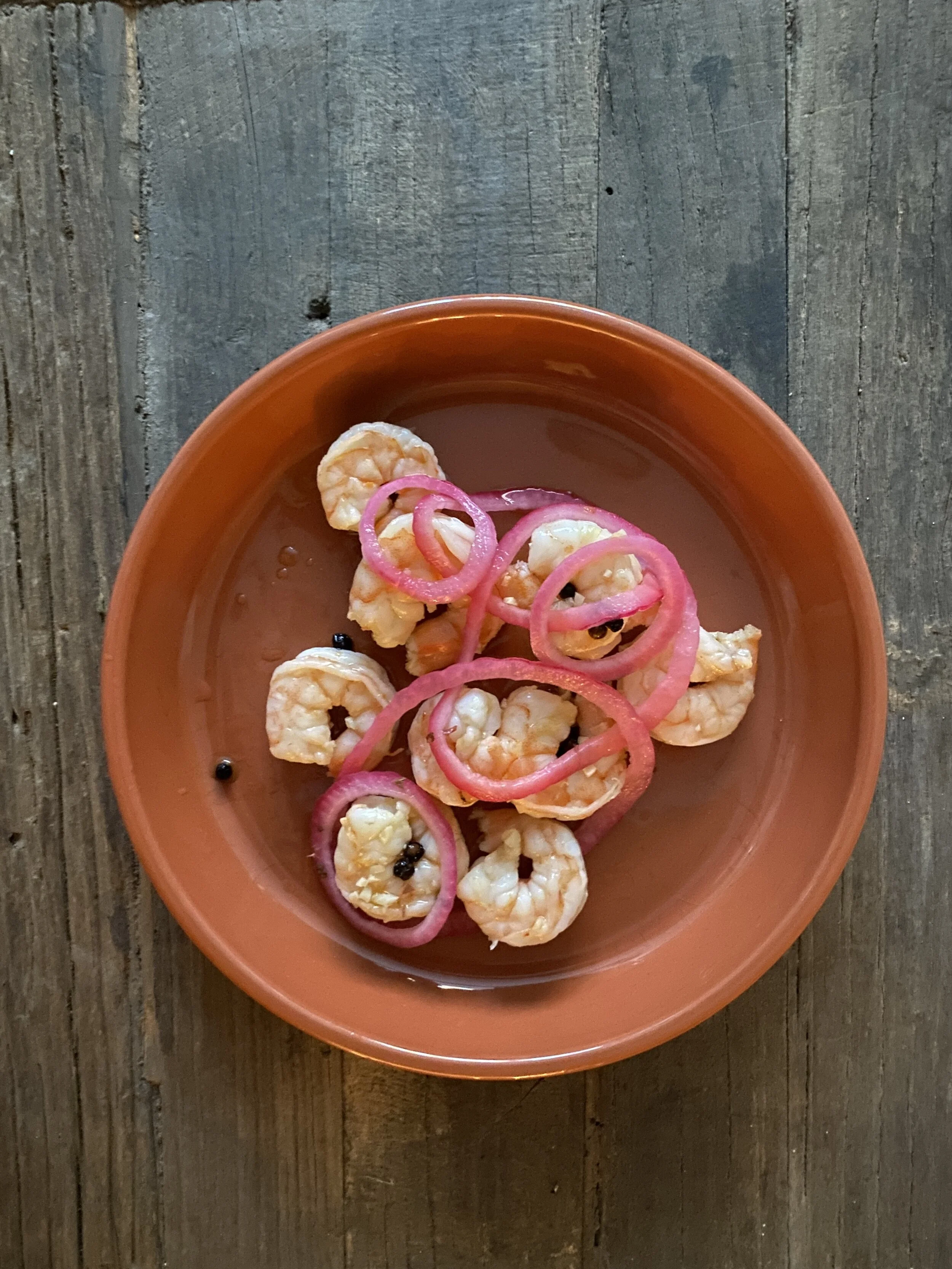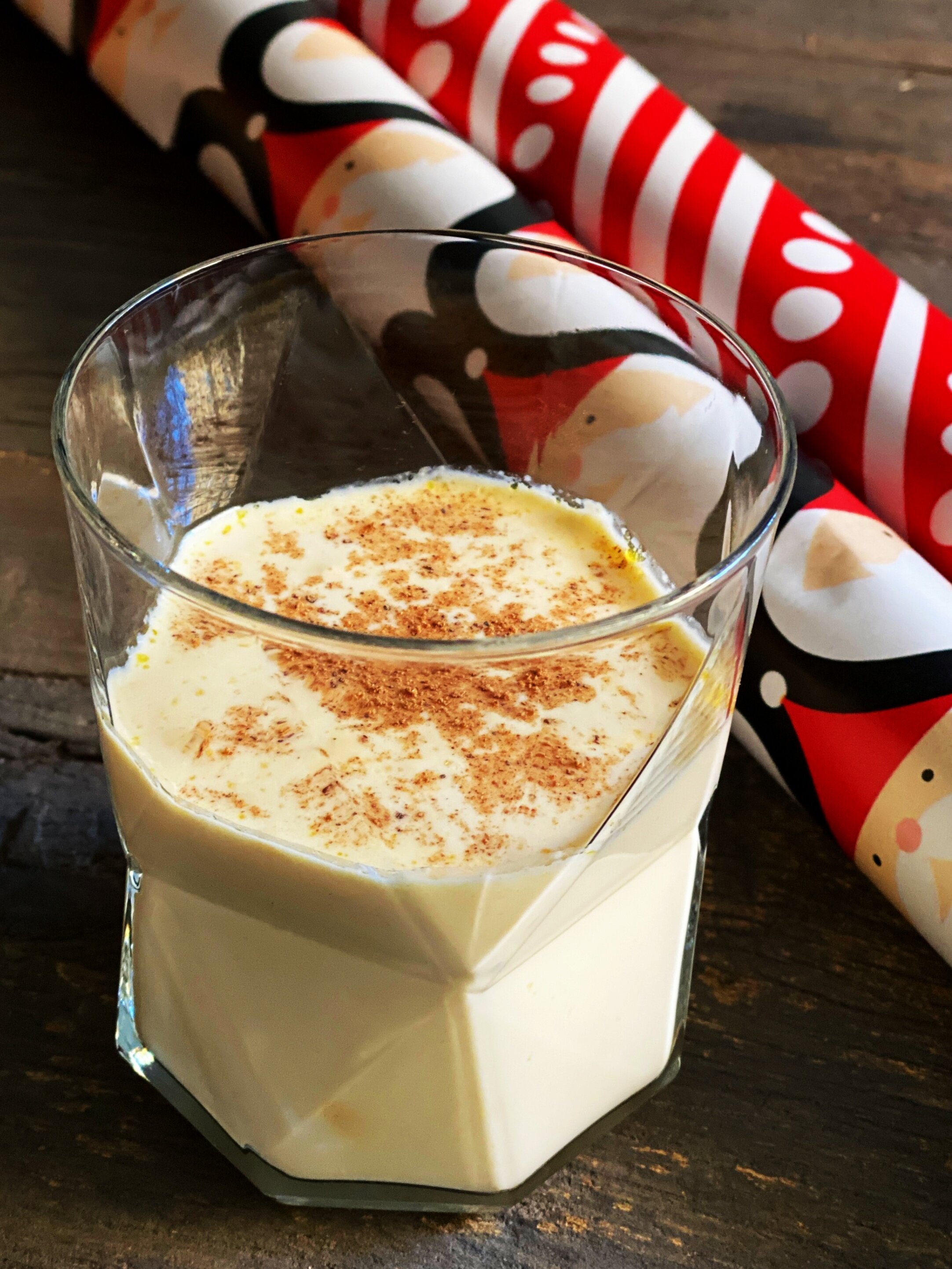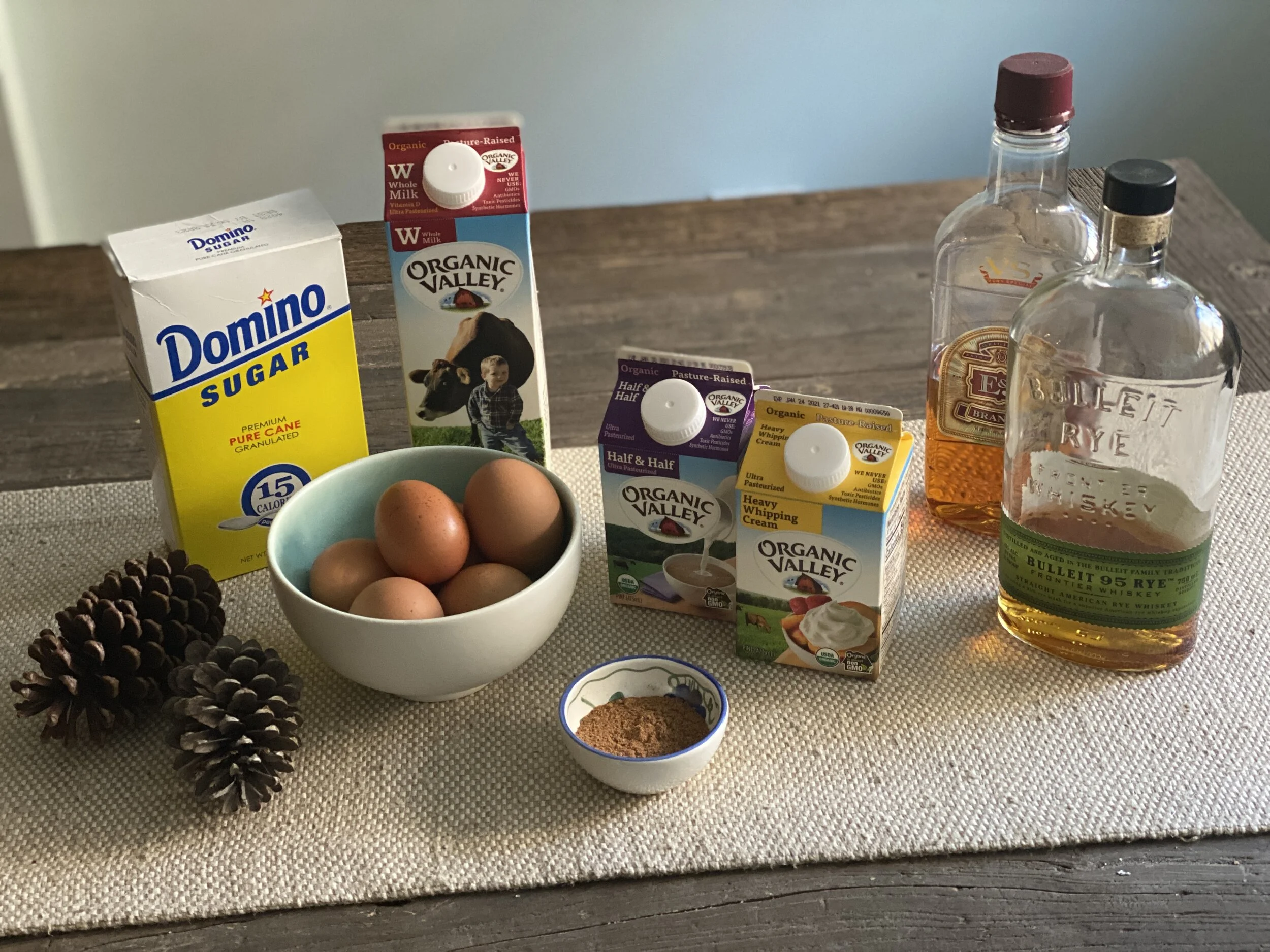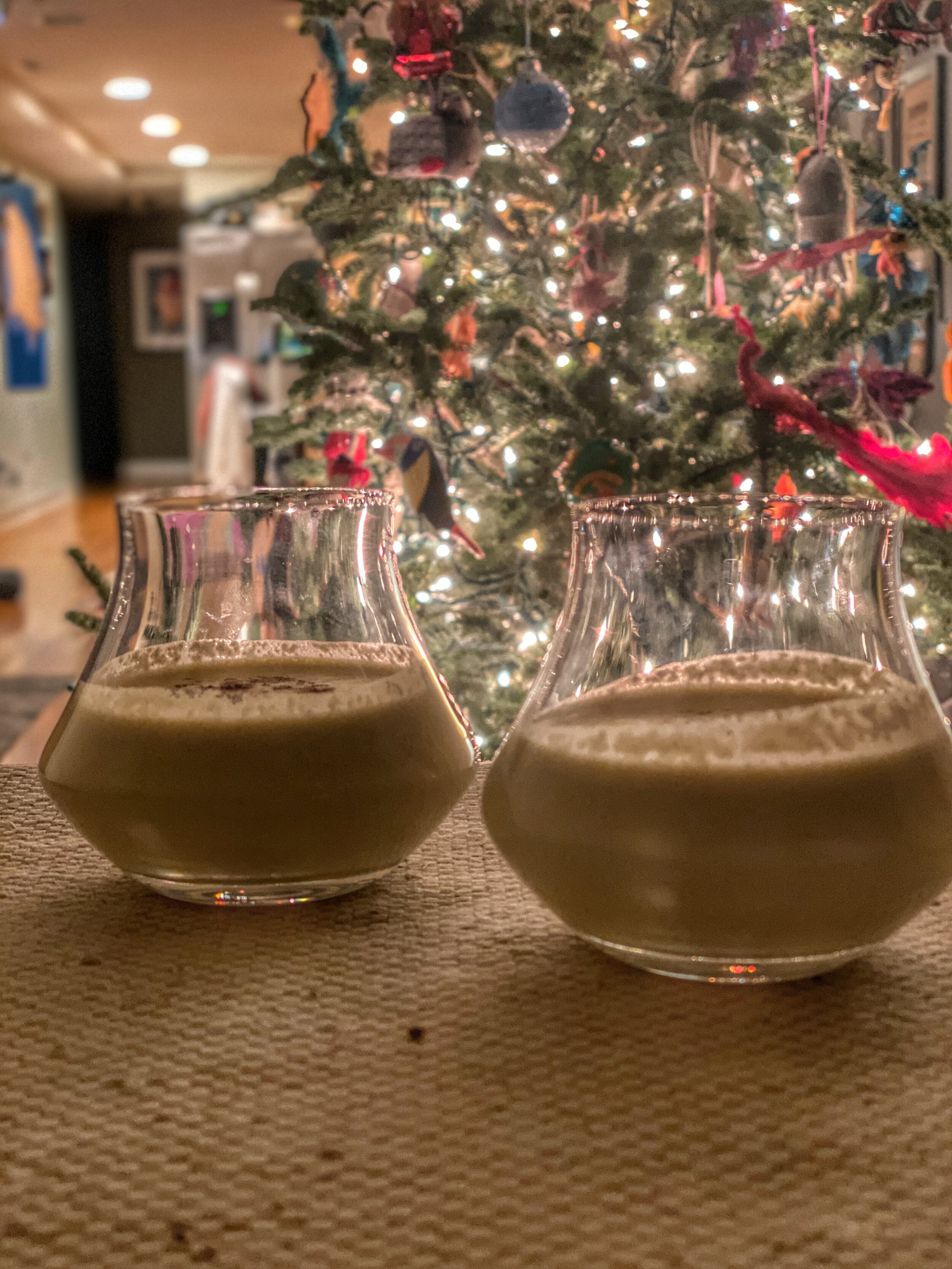Looking for tapas recipes? This escabèche recipe features an aromatic marinade of olive oil, vinegar, garlic and oregano — a perfect tapa for turning any night of the week into a fiesta.
Shrimp escabèche: a delicious cold seafood tapa
When the hot and sticky days of summer arrive in Chicago, I break out one of my tried-and-true tapas recipes. Pair this with patatas bravas, Manzanilla olives and cold bottles of Estrella or sangria for something muy auténtico.
Pair shrimp escabèche with patatas bravas for a mini tapas spread.
Escabèche is a pickling technique used to flavor and preserve food. This method is believed to have originated in Persia, derived from the word sikbāj, meaning “vinegar stew.” It was brought to Islamic Spain, or Al-Andalus, by the Moors, and later adopted by the Christians, who found it to be a good way to get around eating meat on Fridays during Lent.
“Escabèche is a pickling technique brought to Spain by the Moors, and later adopted by the Christians, who found it to be a good way to get around eating meat on Fridays during Lent. ”
I love the marriage of garlic-infused olive oil and the tang of acid from the vinegar quick-pickled (or “quickled,” as Wally likes to say) red onions. They’re an ingredient we usually avoid, as we find their flavor to be too aggressive raw, but the quickling takes the bite out of the onions.
The escabèche process is simple and never disappoints. Plus, all of the ingredients can be prepared ahead and assembled the next day.
Pickled onions, peppercorns and shrimp combine into a tasty treat.
Shrimp Escabèche Recipe
INGREDIENTS
1 small red onion
½ cup distilled white vinegar
¼ teaspoon dried oregano (preferably Mexican)
⅔ cup extra-virgin olive oil
2 Turkish bay leaves or 1 California bay leaf
2 garlic cloves, smashed
1 teaspoon black peppercorns
1 pound raw, peeled and deveined shrimp
Fine sea salt
Red onions, garlic, bay leaves, peppercorns, vinegar and shrimp: your ingredients for a simple, tasty tapas dish
PREPARATION
Slice the onion in half and peel off the outer layer of skin. I like to use a mandolin, placing it on a cutting board. Be sure to use the slicing guard or a cut-resistant glove — these devices can be dangerous! Push the flat side of the onion away from you and repeat this motion with even pressure to keep slices consistent. If you don’t have a mandolin, just try to slice the onion as thin as possible.
Toss together the onion slices, vinegar, oregano and 1 teaspoon salt in a shallow glass or ceramic dish. These are non-reactive materials; if you use a metal dish, you’ll end up with a metallic-tasting tapa.
Cover with plastic wrap and place in the refrigerator.
Quickling the red onions takes the bite out of them.
Gently simmer the bay leaves, garlic and peppercorns in olive oil in a medium saucepan for 10 minutes until fully heated through. Remove from heat until ready to use.
Add shrimp to a medium pot of boiling salted water (1 tablespoon salt for 2 quarts water). Remove from heat and let stand, uncovered, until just cooked through, about 5 minutes.
Poached shrimp
Drain and then combine with the oil mixture in a medium bowl, stirring to evenly coat the shrimp.
Wrap the bowl with plastic wrap and let the shrimp and infused oil mixture marinate in the refrigerator 12 to 24 hours before eating.
Discard the bay leaves and plate the shrimp cold or at room temperature.
Garnish with the onions and pickling liquid.
We like to make sure you get some onions and at least one peppercorn with every bite. It’s the mix of flavors that makes this dish so tasty.
¡Buen provecho!
Note: The escabèche can be refrigerated for up to 5 days. –Duke

